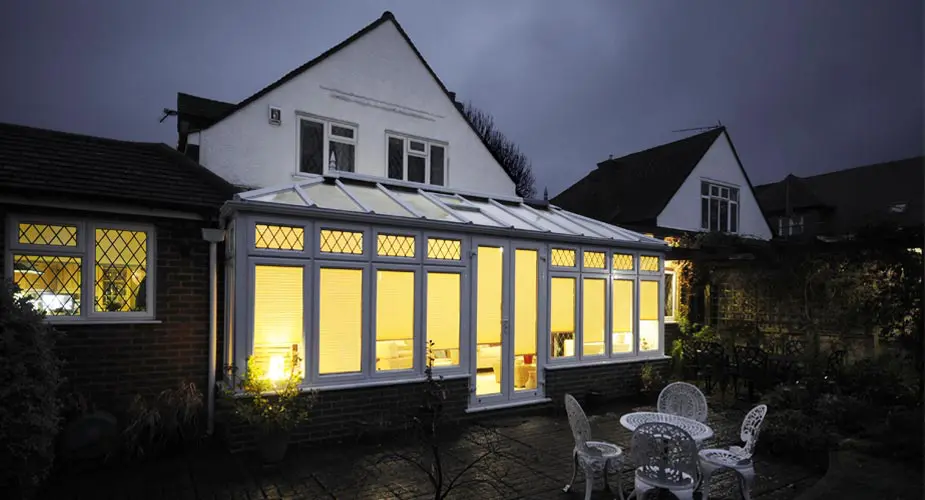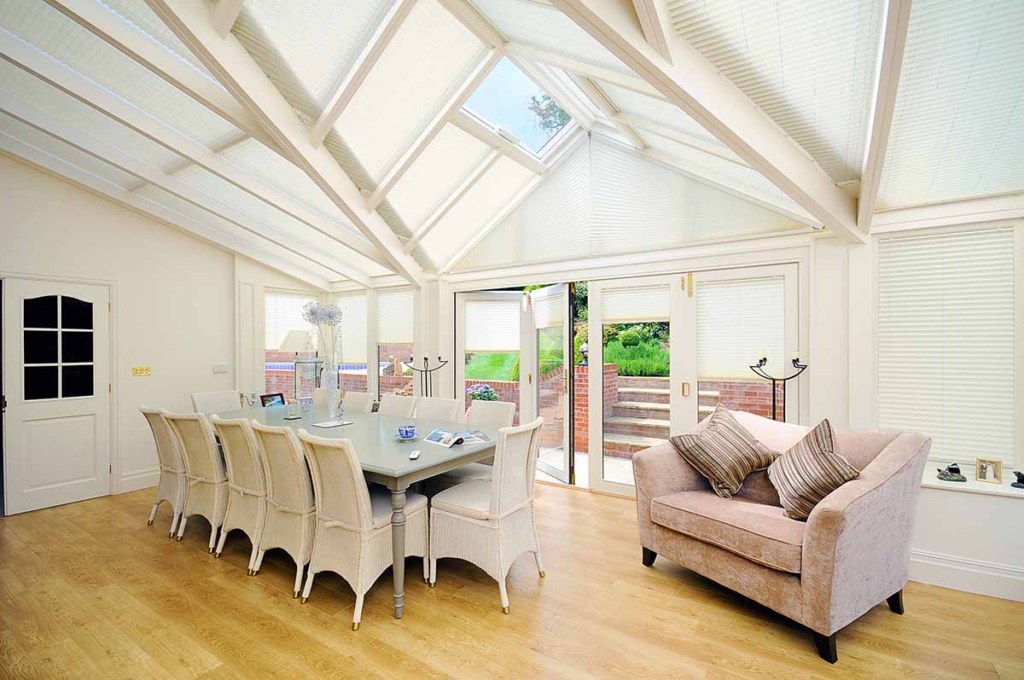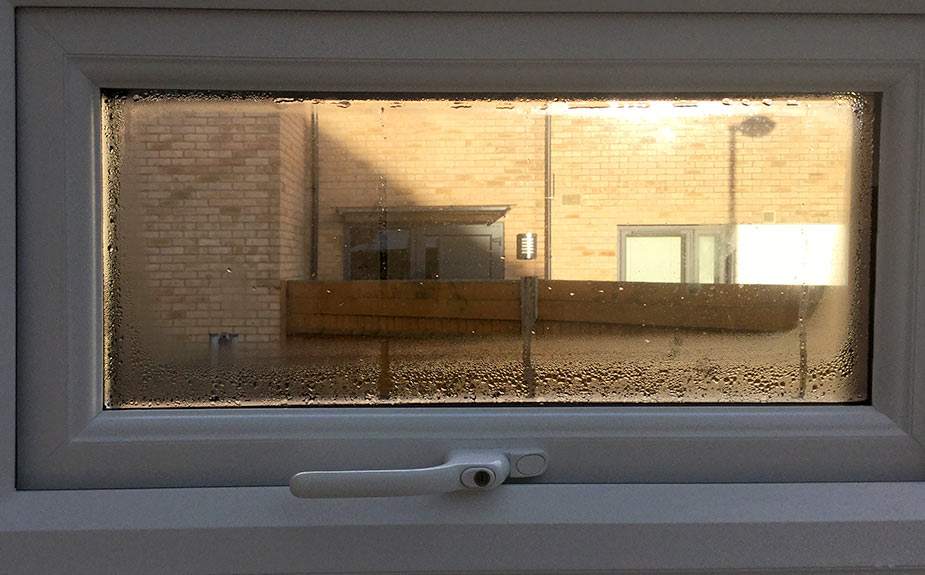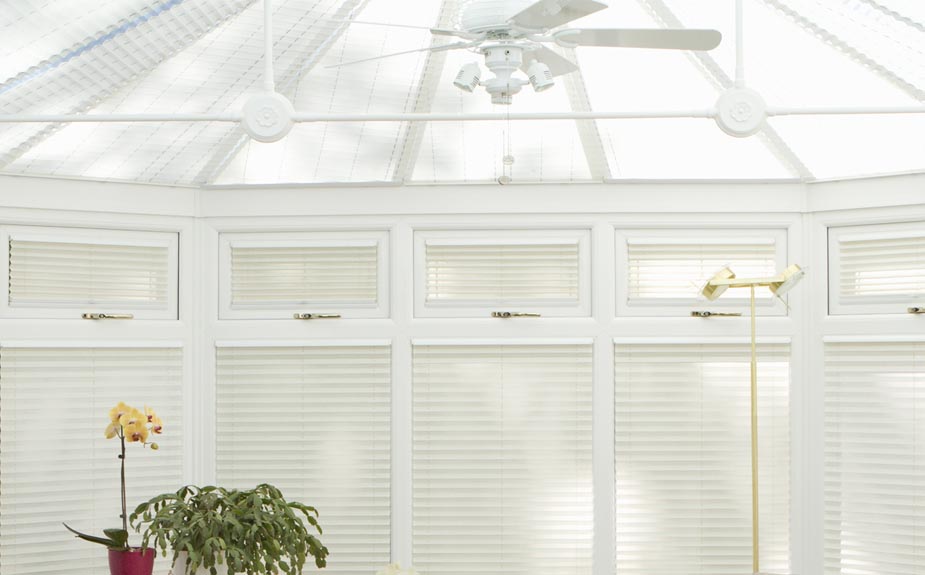Whether you’re currently suffering from a mould problem or worried you are at risk of one, this is the article for you. The BBSA recently received concerns from customers, of another blinds company, worried about the blinds in their conservatories as they had found mould.
Mould can be caused by many factors, but majorly it occurs where there are large amounts of condensation. Mould thrives when the air is cold and wet. For example, if there is moisture in the air then condensation will form on windows and other surfaces which is an indication you may be at risk for mould growth. To further explain, let’s discuss where mould grows. Mould needs organic matter to form so it can attach itself to anything with dirt or moisture to live off. Moisture in conservatories themselves can be caused by poor ventilation and heating. Additionally, a significant temperature difference between the conservatory and that outside or in adjacent rooms can impact your moisture level too. Another great risk is “cold spots” where there are hidden gaps in the conservatory or a small leak seeping in.
The Science Behind Mould
As aforementioned, however, the main causation is condensation which occurs when the RH (Relative Humidity) is too high for the air temperature. So, let’s look at the science behind this.
During a typical winter evening, your conservatory could easily have an air temperature of 16°C with an RH of 70%. In these conditions, by the time the air temperature reaches just 11°C, the air would have an RH of 100% (saturation). And water droplets (condensation) will appear on walls, windows, floors and even furniture.
Mould requires the RH to exceed 70% for some time before it will start growing. They estimate general human comfort level as being between 30-60% RH, within a temperature range of 18-25°C.
Mould takes the appearance of small black (most common), grey or green spots. This is most commonly seen around windows, external walls and especially in external corners.

As aforementioned, however, the main causation is condensation which occurs when the RH (Relative Humidity) is too high for the air temperature. So, let’s look at the science behind this.
During a typical winter evening, your conservatory could easily have an air temperature of 16°C with an RH of 70%. In these conditions, by the time the air temperature reaches just 11°C, the air would have an RH of 100% (saturation). And water droplets (condensation) will appear on walls, windows, floors and even furniture.
Mould requires the RH to exceed 70% for some time before it will start growing. They estimate general human comfort level as being between 30-60% RH, within a temperature range of 18-25°C.
Mould takes the appearance of small black (most common), grey or green spots. This is most commonly seen around windows, external walls and especially in external corners.
How to Avoid Condensation Mould in Conservatories
- Ventilation
Improve ventilation so that the air circulates by drawing in fresh air from outside; and expelling moist air from inside your conservatory. This is mostly achieved by ensuring that your conservatory has adequate cross-ventilation. This involves opening windows that are opposite each other and trickle vents. Without adequate ventilation, no other measures will cure the problem.
- Avoid Still Air Pockets
Pay particular attention to corners, behind furniture that is close to an external wall or window. Then ensure that you keep blinds and curtains open for a good portion of the day.
- Check Cold Spots
Also, check the conservatory for cold spots using an RF temperature probe. Make sure to check the joints between windows and at the eaves.
- Check for Leaks
Check your conservatory and house for leaks, particularly guttering and rainwater pipes. This can cause water to seep into your conservatory, through the walls, or tiny joints.
- The Right Amount of Air Circulation
Whilst it is good practice to leave windows open for an hour a day, just enough to encourage air circulation. Do not leave them open for hours when the temperature is cold; as this will increase your risk.
- Humidity
To tackle moisture in the air and general dampness, You can also use a dehumidifier to control the amount of moisture in the room.
- Double Glazed Windows
These can help reduce condensation and moisture considerably. The inner pane is considerably warmer than the outer pane which acts as a heat barrier, thus reducing the likelihood of condensation forming.
Conservatories are barely insulated compared to the rest of your home. It is always a good idea to consider background heating in a conservatory; for example, underfloor heating, controlled by a separate room thermostat. This keeps the air temperature above 15°C even at night. Your conservatory will be at its coldest around 3.00-5.00 am.
Additionally, please ensure that the conservatory is kept at a relatively stable temperature. When the temperature is too low, it will take a great deal more heat to raise the temperature once it has reached the dew point. Therefore, we strongly recommended insulating conservatory roof blinds.
What About Conservatory Blinds?

As we have seen, mould only grows in the presence of water. But it also requires organic material on which to live. The fabrics on most blinds are completely man-made (except pinoleum.) This means the mould will only thrive on the fabric if it is dirty. The solution, therefore, is to keep your blinds clean at all times and not to allow condensation to occur.
With our Duette® Thermal Blinds, they can aid with temperature control in a conservatory. Due to the unique cellular honeycomb construction of their fabric, they offer another layer of insulation between the cold outside and your home. Additionally, Duette blinds offer privacy and temperature control in the summer months too in many fabrics ranging from translucent, opaque or full blackout fabrics.
If your blinds show any signs of mould, then you can try washing them. But, mould spores normally attach themselves to the fibres of fabric at the microscopic level. This makes it almost impossible to remove them without damaging the fabric; so it may be too late by that stage.
This isn’t limited to blinds and is equally true of any other fabrics (clothes, furniture etc.) So don’t delay; if your conservatory shows signs of excessive condensation (which is normal when a conservatory is new and it is drying out) then keep your windows and blinds clean, but immediately address the fact that you could be one of those at risk for mould in conservatories.
Nevertheless, we are here to help with mould in conservatories by offering you methods of prevention so your house stays comfortable and safe.



































